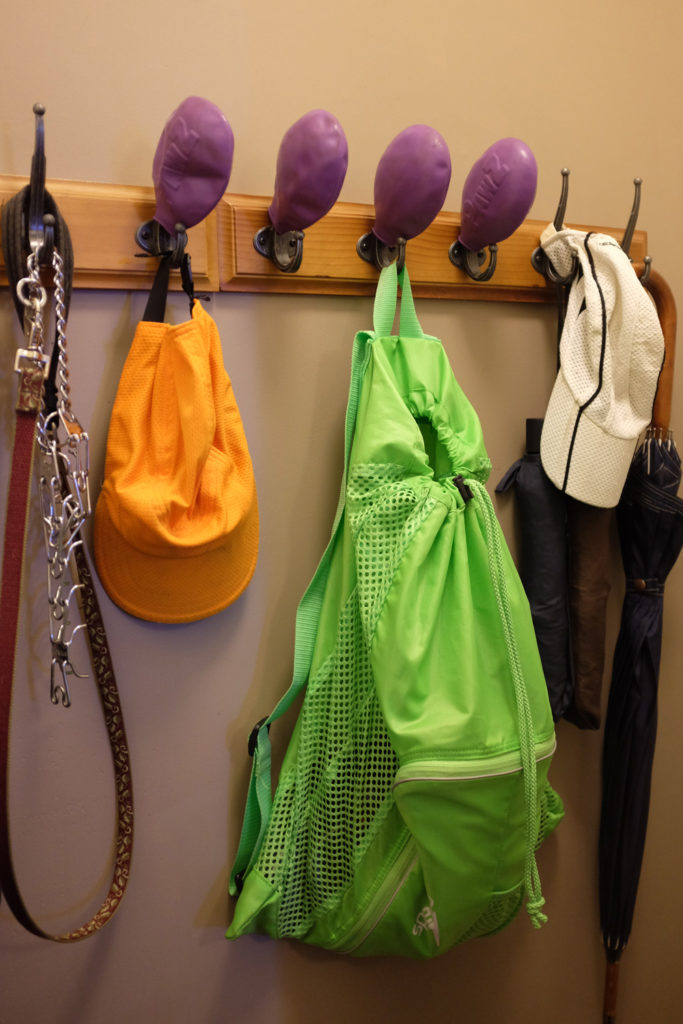Saw scarcely any birds, but there was sunset and moonrise.
Category: swimming
Dailiness and inevitability
I wrote about dog poop and Alfonso Cuarón’s movie Roma for NYR Daily.
Color study
Fractionated
One of the great challenges of swimming, for me, is remembering how many laps I’ve swum. Mostly I just repeat the number in my head as I swim: “This is lap twelve, this is lap twelve, this is lap twelve,” for example, which is a little boring. I have a few mnemonics. Lap number fifteen, for example, is the lap especially devoted to daydreaming about the snack that I will eat when I get home. To most numbers, however, I don’t have any particular association, and my mind strays.
Yesterday, on lap twenty-five, I strayed into thinking about why the fraction one quarter is written in decimals as 0.25. I had always assumed that the way fractions appear in decimal form is more or less arbitrary, but yesterday, maybe because I was swimming, and therefore thinking about my hands at the same time that I was thinking about decimals, it started to seem a little suspicious to me that one quarter, when written in decimals, should take the form of five times five—and especially suspicious given that humans ordinarily write their numbers in the decimal system (a ten-based system—that is, with ten numerals, 0 through 9) in part because they have five fingers on each hand, and two times five equals ten. Is one quarter a special fraction? Is it a coincidence that one quarter, in decimals, looks like five squared?
I couldn’t figure it out while swimming, but this morning, while walking the dog, I tried again.
Suppose you’re writing numerals in a b-based system. (In the usual, decimal system, b is 10, but b could just as well be 8 or 12 or 47.) And suppose that b is the product of the two smaller numbers, the number 2 and a number that we’ll call f, for fingers. (In the world we live in, b = 10 and f = 5.)
Then here’s another way of asking my question: what does the fraction 1/4 look like when expressed in “decimals” in a b-based system?
Suppose we’re going to need at least two “decimal” places to express the fraction 1/4 in the b-based system. (They shouldn’t really be called “decimal” places, of course, in a non-decimal system, and I’m guessing when I say that two is the number of “decimal” places that we’ll need to shift, but I’m pretty sure my guess is kosher.) In order to “see” the two numerals to the right of the “decimal” place, we need to move the “decimal” place over two notches—in other words, we need to multiply by whatever 100 is in the b-based system. In our usual decimal system, 100 is 100—more properly written, 10010 = 10010. In an 12-based system, 10012 is 14410. In general, 100b = b2.
To find the numerals to the right of the “decimal” point that express the fraction 1/4 in a b-based system, in other words, you need to multiply 1/4 by 100b, or 1/4 x b2.
But b = 2 x f. So the numerals to the right of the “decimal” point that express 1/4 in a b-based system also equal 1/4 x (2f)2, or 1/4 x 4 x f2, or f2.
Not a coincidence, in other words. It’s because humans have five fingers, and because they write their numbers in a system based on ten, which is five times two, that the fraction 1/4 is expressed by the square of five when written in decimals.
What’s more, it’s possible to generalize. If humans had six fingers on each of their two hands and counted in a 12-based system, then the fraction 1/4 would be expressed to the right of the “decimal” point by the same numerals that express 6 squared—3610, or 3012. In other words, 1/4 = 0.3012, and it wouldn’t be a coincidence that 3012 is the square of 612. And if humans had four fingers on each hand and counted in an 8-based system, the fraction 1/4 would be expressed to the right of the “decimal” point by the same numerals that express 4 squared—1610, or 208. In other words, 1/4 = 0.208, and it isn’t a coincidence that 208 is the square of 48.
You can generalize in another direction, too. If you look at the fraction 1/8, and notice that 8 is the cube of 2, you’ll see that its expression in decimals is 0.125, or 5 cubed—not a coincidence, either.
What if humans had h hands, instead of just 2, and counted in a system based on b = h x f? It would still be the case that the fraction 1/h2 will be expressed as f2 in b-decimals. For example, if humans had three hands and four fingers on each hand, and therefore chose to count in twelves, the fraction 1/9 would take the form 0.1412, and it wouldn’t be a coincidence that 9 is the square of 3, and 1412 (a.k.a. 1610) is the square of 4.
I don’t know how a three-handed human would swim, however.



